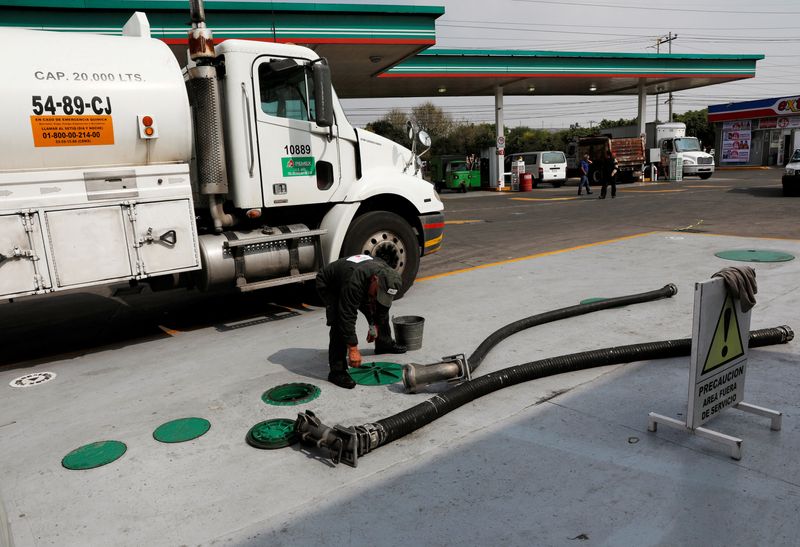OPEC sees lower 2022 oil demand growth, sticks to 2023 view
2022.08.11 15:37

FILE PHOTO: A tanker truck delivers fuel at a gas station in Mexico City, Mexico, on January 14, 2019. REUTERS/Henry Romero/File Photo
By Alex Lawler
LONDON (Reuters) – OPEC cut its forecast for growth in world oil demand in 2022 for a third time since April, citing the economic impact of Russia’s invasion of Ukraine, high inflation and ongoing efforts to contain the coronavirus pandemic.
In a monthly report on Thursday, the Organization of the Petroleum Exporting Countries (OPEC) said it expects oil demand to rise by 3.1 million barrels per day (bpd), or 3.2%, in 2022, down 260,000 bpd from the previous forecast.
Oil use has rebounded from the worst of the pandemic and is set to exceed 2019 levels this year even after prices hit record highs. However, high crude prices and Chinese coronavirus outbreaks have eaten into 2022 growth projections.
“Global oil market fundamentals continued their strong recovery to pre-COVID-19 levels for most of the first half of 2022, albeit signs of slowing growth in the world economy and oil demand have emerged,” OPEC said in the report.
OPEC’s view contrasts with that of another closely watched forecaster, the International Energy Agency, which earlier on Thursday raised its outlook for 2022 demand, citing higher use of oil for power generation. [IEA/M]
For 2023, OPEC expects growth to slow further to 2.7 million bpd, leaving its forecast unchanged from last month.
The group and allies including Russia, known collectively as OPEC+, are ramping up oil output after record cuts put in place as the pandemic took hold in 2020.
In recent months OPEC+ has been undershooting targeted production increases owing to underinvestment in oilfields by some OPEC members and by losses in Russian output.
The report showed OPEC output bucked that trend in July, rising by 162,000 bpd to 28.84 million bpd.








